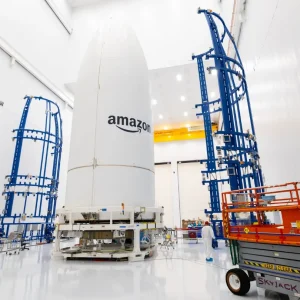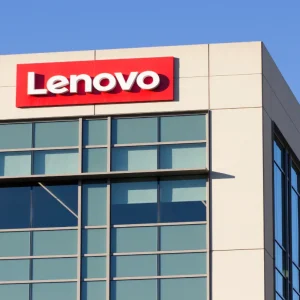
Uptake of a government voucher scheme designed to turbo-charge deployment of gigabit-capable broadband has been desperately poor — and the problem is so pronounced that ministers are launching a strategic review to understand the failure.
The scheme offers “rural* premises” government vouchers worth £1,500 per home and £3,500 per SME** to support the cost of gigabit-level fibre installation.
But for a population of over 66 million, just 44,792 vouchers have been issued — with only 29,142 of these resulting in a live gigabit connection. (We understand the gap is down to ongoing builds and/or voucher issuances that didn’t meet final costs).
The admission came in an August 8 release from the Department for Digital, Culture, Media & Sport (DCMS) that lauded the “milestone” connection of just under 500,000 premises*** across the UK to gigabit-capable broadband since summer 2018; made under a £1 billion funding commitment running until the end of 2021.
(Gigabit internet carries speeds of a thousand megabits per second: the kind of capacity that could let a user download HD films in seconds and stream TV and gaming content at 4K picture quality on multiple devices seamlessly.)
What is the Gigabit Broadband Voucher Scheme?
Some 7.5 million premises can now, in theory, connect to gigabit-speed connections via an ISP: up from 1.4 million two years ago. The gigabit broadband voucher scheme was rolled out in 2018 to help augment this progress and was advertised as a “step up” for harder to reach or poorly connected areas of the UK.
Particularly with the surge to remote working as a result of COVID, it could prove a vital way for newly remote workers and businesses to turbocharge poor connections. Yet with take-up so poor, the DCMS has been forced to launch a new “Gigabit Take-Up Advisory Group (GigaTAG)” to lead a strategic review into the failure, even as it continues to dangle the promise of £5 billion more funding.
This will “look at encouraging more consumers to engage with this new technology and to take advantage of the benefits that they will bring”, the DCMS said.
GigaTAG’s “Strategic Review”
Why is take-up so low?
Lydia Marshall, a DCMS spokesperson told Computer Business Review: “The voucher scheme is demand-led so where there are areas of low take-up it may be because there aren’t many active suppliers in the area, or there are already plans to provide faster broadband under another commercial or government-funded project at the address”.
The new GigaTAG group, meanwhile, will be headed by the online review platform Which? and will be joined by Ofcom, the Confederation of British Industry (CBI) and the Federation of Small Businesses (FSB). Anna Slater, a spokesperson for the FSB, told us: “Uptake of these connections is important to allow small businesses to reap the benefits of better internet speeds… Only with a collaborative, joined-up approach can we strengthen small firms’ willingness to engage in the broadband market”.
In Which Our Editor is Not Reassured….
A swift review by Computer Business Review suggests that while higher prices for gigabit-capable services — as well as customers being locked into long contracts with their existing ISP and a lack of general awareness — may stymie uptake, a desperately inconsistent and opaque application procedure is also unlikely to help.
Our own experience was borderline Kafkaesque.
Our editor checks his postcode…
A government postcode checker is signposted by DCMS as the first port of call.
Our editor (struggling with mediocre broadband in a village on the outskirts of Canterbury that falls just inside the ONS’s definition of “rural” ) tapped in his postcode.
“Some addresses in this postcode may be eligible for a rural gigabit voucher” came the answer. (Hardly the unambiguous “congratulations, you are eligible” that some applicants may seek, but not a definite “no” either…
Ten potential providers came up as “active in this area” — and presumably participating in the scheme; although, again, this was not explicit.
We clicked through to one of the “active” suppliers: opting for testing purposes to go for one of the largest and presumably most experienced, Openreach.
… we are directed to another postcode checker
This link directed us to Openreach’s own postcode checker, which did not immediately promise a gigabit connection: merely the vague offer of “faster fibre”.
We punched in the postcode.
“Great news” said Openreach’s system after a quick check.
“Fibre-to-the-Cabinet (FTTC) of up to 80 Mbps is is now available to millions of UK homes and businesses – including yours.” (It wasn’t available for hook-up when your humble editor moved in to his new abode, a mere 12 weeks ago, but that is another story…) Still actively pursuing the elusive gigabit connection, we dug deeper.
 Want a gigabit? Try a “Community Fibre Partnership” says Openreach.
Want a gigabit? Try a “Community Fibre Partnership” says Openreach.
Want “technology that supports speeds up to 1Gbps?” (came the only gigabit-related option on Openreach’s portal that the government’s own portal had fed us through to…) “You could apply for a Community Fibre Partnership”.
Still chasing a gigabit connection and still chasing vouchers to help make it happen, we clicked onwards. Pursuing this option meant taking four more initial steps.
As per Openreach’s guidelines:
Step 1. “Use the fibre checker to see what’s available in your area”. (Ed: Having done this, the answer was “if you want a gigabit connection, try a community partnership”. To do this, you need to email Openreach expressing interest. We did so…)
Step 2. “Around 24 hours later we’ll send you a second email with a link to a website. You can use this to fill in details of the addresses, postcodes and landline numbers of other local people who are interested in setting up the Partnership.”
(Ed: This seems premature. The applicant has no ballpark cost estimates yet, nor guidance on critical mass needed. The enthusiastic may well go out banging doors or Facebook pages, but without the ability to tell friends, neighbours or fellow SME leaders what kind of critical mass or funding will be needed, they are groping in the dark; publicly. The demand for landline numbers is also arguably anachronistic.)
Step 3: “This is when you’ll need to start drumming up support in your area. Talk to your neighbours and local businesses about the benefits of fibre broadband” says Openreach. (Ed: note the reference to “fibre broadband” rather than “gigabit broadband” and the pressure to go blind into community engagement).
Step 4: “At this point”, says Openreach (Ed: at which point? When you hit a certain unquantified number of engaged neighbours?) “we’ll give you a ballpark cost to bring fibre to your area. We’ll cover some of the costs, so the price in the quote will be what we call ‘the gap’ i.e. the amount your community will need to pay”.
 In Which Confusion Becomes a Migraine…
In Which Confusion Becomes a Migraine…
Openreach continues: “You might also be able to get Government funding, including the Rural Gigabit Scheme.This scheme offers vouchers towards the cost of your build of up to £1,500 for residents and £3,500 for businesses.” (Ed: Wait, what? That’s what we have been trying to do on every stage of this customer journey!)
At this point, Openreach refers the aspirant gigabit customer and funding-seeker back (via the above link) to the very same government postcode checker we started with. Ladies and gentlemen: we are going around in circles.
The whole scheme, in short, is a diabolical mess, with desperate lack of clarity, poor UX and the onus on an applicant who is expected to “drum up” neighbourhood support from a position of nearly complete ignorance about potential cost to that community, and with an insatiable appetite for circular link-chasing.
When it comes to the strategic review, GigaTAG could do worse than to start by fixing this customer journey. Frankly we are amazed that over 40,000 people had the patience. (It’s plausible that other providers offer a better user experience.)
*Rural being delineated in this 2011 paper. A crude rule of thumb is that if your area has over 10,000 inhabitants, it is urban, not rural.
**The DCMS adds in footnotes to its release that a programme to double the vouchers, making them worth £3,000 to individuals and £7,000 to SMEs is “available in Cumbria, Kent, Northumberland, Hampshire, Dorset, Warwickshire and West Sussex”. It offers precisely zero guidance on how to go about securing this larger voucher.
*** 493,600 “now have access to or are connected to gigabit capable broadband”. The “or” seems telling: access does not mean a connection

 In Which Confusion Becomes a Migraine…
In Which Confusion Becomes a Migraine… 




